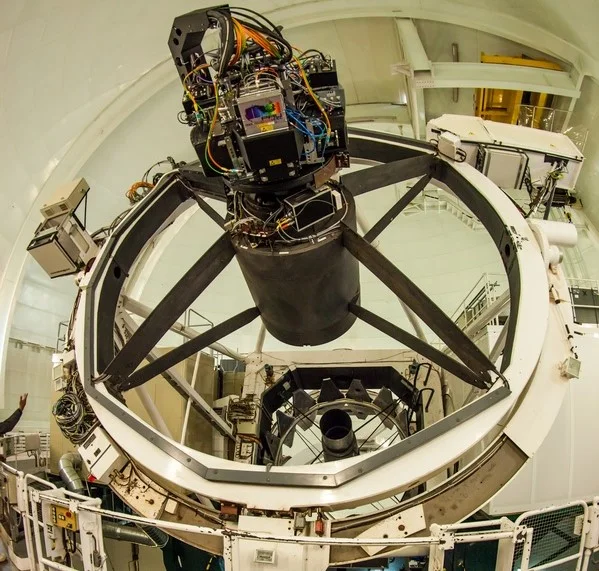Ground Instrumentation
PAU


Wide-field instrument to measure distances to galaxies installed at the William Herschel telescope

The goal of the Physics of the Accelerating Universe (PAU) project is to understand the physics of the accelerating Universe through a large survey of galaxies that will map the cosmological expansion with an unprecedented combination of density and radial distance precision. PAU will provide a simultaneous measurement of the growth history of cosmic structures and their expansion, in order to differentiate between the hypothetical existence of dark energy and possible alternative explanations, such as a presumed modification of gravity or other laws of nature.
PAUCam is an optical imaging camera mounted at the prime focus of the William Herschel Telescope, a 4 m-class telescope located at the Roque de los Muchachos Observatory on La Palma in the Canary Islands. It consists of an array of 18 CCDs sensitive over the entire optical range, including the reddest light. It can image about 2 square degrees per night, providing photometric spectra for about 30 000 galaxies, 5000 stars and 1000 quasars. The instrument received its first light in June 2015.
PAUSurvey is an international collaboration that will gather precise information on the redshift and spectral energy distribution of millions of galaxies and stars at a depth and area never before explored.
THE IEEC CONTRIBUTION
The IEEC members involved in PAU have held the prominent positions of PAUSurvey director and PAUCam project lead scientist. From a technical point of view, the IEEC has contributed to the acquisition and characterisation of the PAUCam CCD and filters as well as other parts, the construction and operation of the optical, cryogenic, and electronic test bench, the design and construction of the camera guidance system and alignment, the design and implementation of the camera optical system, and its characterisation. The Institute leads the reduction and distribution of the PAUSurvey data, as well as the community pipeline and automated analysis pipelines. The IEEC also leads the scientific exploitation of the PAU data, including simulations, forecasting, and analysis of photometric redshift and clustering.
